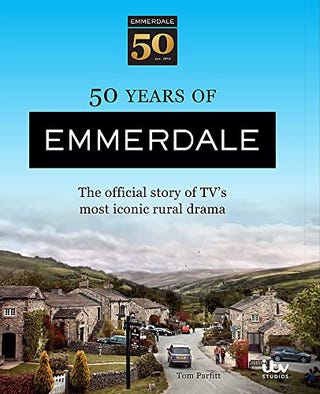As Netflix has just debuted its steamy adaptation starring The Crown's Emma Corrin – only the latest in a streak of raunchy period dramas – it seems hard to believe this story could be banned over its explicit content and "unprintable" words. Yet, DH Lawrence's 1928 novel Lady Chatterley's Lover is indissolubly connected to the scandal surrounding its publication, which took 32 years, only landing uncensored on bookshelves glory in 1960.
Showing a modern sensibility, Lawrence follows Constance 'Connie' Reid, a young woman from an upper-bohemian circuit who marries the Baronet of Wragby, Sir Clifford Chatterley. Their initially happy marriage turns dry when he comes back from WWI paralysed from the waist down.
After trading London for Derbyshire, the lack of intimacy takes a toll on Lady Chatterley, who's starved for human contact. Meanwhile, Clifford seems perfectly happy to have her as his on-call nurse, but not to extend her any sort of physical affection.
An affair with the estate's gamekeeper, Oliver Mellors, prompts Constance's sexual renaissance and marks the beginning of her quest for independence. An incendiary, interclass affair may not sound as scandalous today as it was nearly a century ago, as this cinematic version of Lady Chatterley's Lover is aware.
Faithful to Lawrence to an extent, the movie from French filmmaker Laure de Clermont-Tonnerre – the second woman to ever direct this story for the screen — dilutes some aspects of the book to zero in on the romance between Constance (Corrin) and Mellors (SAS Rogue Heroes' Jack O'Connell). There's no doubt this is a love story, just like Mrs Bolton (Joely Richardson, who played Constance opposite Sean Bean in a 1993 film adaptation) spells out in the finale.
Despite insisting on the feelings that Constance and Oliver develop, the film still relies on the couple's sexual connection as the core of their tenderness for one another. But the intimate moments with Mellors shift the focus on Connie.
In the novel, the protagonist is under his spell, mostly laying down as he performs the male triple thrust. The film's horny sequences see a heroine who gradually regains her sexual agency, knowing what makes her tick.
Both can't keep their hands off each other, yet it's Connie who often initiates sex and makes her needs understood. A testament to Corrin and O'Connell's fiery chemistry, these scenes, however, don't feel as all-consuming as they do in the book.
We may be anaesthetised to on-screen explicit moments, but the film doesn't always match the life-altering, urgent quality of Connie's sensations as Lawrence describes them. These raunchy scenes are pretty straightforward, with a muted colour grading suggesting the opposite of the vibrant bodily explosions both characters should be experiencing.
Luckily, Lady Chatterley's Lover maintains the almost pagan aspects of their relationship. The scene where Mellors and Connie dance naked in the rain is a joyous, sensual moment, and O'Connell's beautifully restrained performance counterbalances Corrin's wide-eyed, feral energy throughout.
In this light, it makes sense for the film to change a moment of the novel. Before the affair begins, Connie examines herself in the mirror after having spied on Mellors washing himself.
The sight of her wanting body and the memories of Mellors' nakedness have a powerful effect on our heroine, who masturbates before going to bed. In the book, Connie cries herself to sleep instead, angered at her husband and other men who have deprived her of "healthy human sexuality".
The film tweaks the source material, proving that this version of Connie may be less bothered with the clash of mind and body central to the book, but isn't waiting for others to give her what she deserves. Lawrence's novel isn't just a mere sexual affair, though.
Among its occasional problematic language (racist slurs, casual antisemitism and certain misogynistic instances, often in connection with Mellors' estranged wife Bertha), the book includes a complex reflection on class and scathing criticism of industrialisation that Netflix's film reduces to scattered dialogue lines. The author pens an impoverished, heavily industrialised Derbyshire, with workers squeezed to the last drop by aristocrats, Clifford being one of them.
Casting his passion for writing aside to run his father's coal mines in the nearby village, the Baronet unceremoniously chooses to profit off the backs of his men. A firm opposer to social mobility, he justifies his actions with the belief in profound differences between individuals due to their socioeconomic backgrounds.
This subplot is considerably watered down in the movie, failing to go to the roots of a divide which is only growing larger today. Corrin's idealistic Connie challenges Clifford's views in words, but the film hardly ever takes a visual approach to paint this exploitative tableau.
In both media, Constance's affair with Mellors elicits strong reactions because of their class difference. Clifford would have been more lenient towards someone in his same ranks, as he himself suggests Connie could get pregnant in an extra-marital relationship with "the right sort of fellow".
Needless to say, Mellors doesn't fit this description. Not purely because he is working class, but also because he dared better his condition, having been a lieutenant during the war.
The film flattens Mellors' inner class conflict and attempts at class-passing by having him speak in English most of the time, though with a heavy Northern accent. In the book, the character continuously code-switches between Standard English and Derbyshire dialect, his use of language being inseparable from his social status.
This feature manages to bring Connie's hypocrisy to the fore as she's sometimes annoyed at her lover's use of dialect. Netflix's period drama offers a stripped-down, romantic take on the story, changing the timeline of events and culminating in a slightly yet significantly different ending – warning, spoilers follow.
As they both await their divorce (which may prove more difficult for Connie due to Clifford's stubborn refusal), the two lovers meet again. Mellors is now working on a farm in Scotland and writes to Connie, who jumps on her sister Hilda's (Game of Thrones' Faye Marsay) car to get to him.
Lawrence's novel ends with a thoughtful letter from Mellors. The last few pages offer a glimpse of hope the two lovers will reunite soon, but exist in the beautiful, terrible limbo of uncertainty.
We can imagine a more reflective Mellors here, finally ready to open up to Connie. He touches upon class conflict once again and closes his missive with a sexy, tender nod to their sensual adventures.
His sentences ooze a burning, if quieter, desire, brimming with expectations. The film retains some of them, but finishes off with Connie and Oliver's silent, moving embrace in rural Scotland.
This is a clearer, more satisfying ending than the book's epilogue, which thrives in the realm of possibilities. It lacks that quality of devastating anticipation that makes Lady Chatterley's Lover still resonate with readers today to zero in on Connie's power. Unafraid to get what she wants (or who, in this case), this cinematic heroine is ready for the new beginning she's created for herself and her gentleman.
Lady Chatterley's Lover is streaming on Netflix.



































